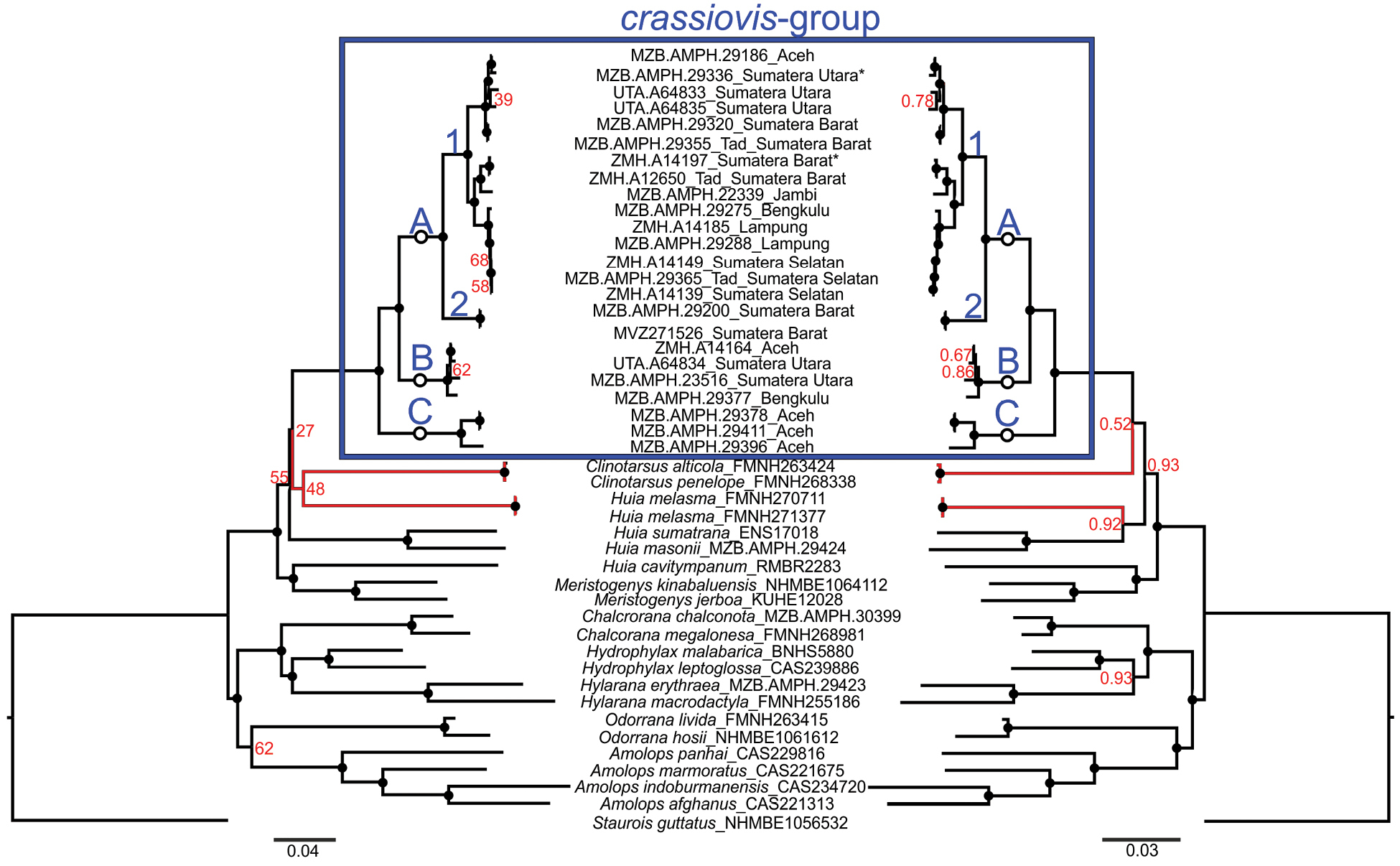
|
||
|
Bayesian (on the right) and Maximum Likelihood (on the left) trees showing the phylogenetic relationship of the crassiovis-group. A, B, C are distinct lineages within crassiovis-group. Black circles represent well supported nodes (PP ≥ 0.95 and BS ≥ 70). Red branches represent relationship between Clinotarsus and Huia melasma. Tadpole sequences named with specimen number_Tad_locality (province). Adult sequences named with specimen number_locality (province). MZB.AMPH.29336 and ZMH.A14197 were collected from the type locality of C. kampeni and C. crassiovis, respectively. |